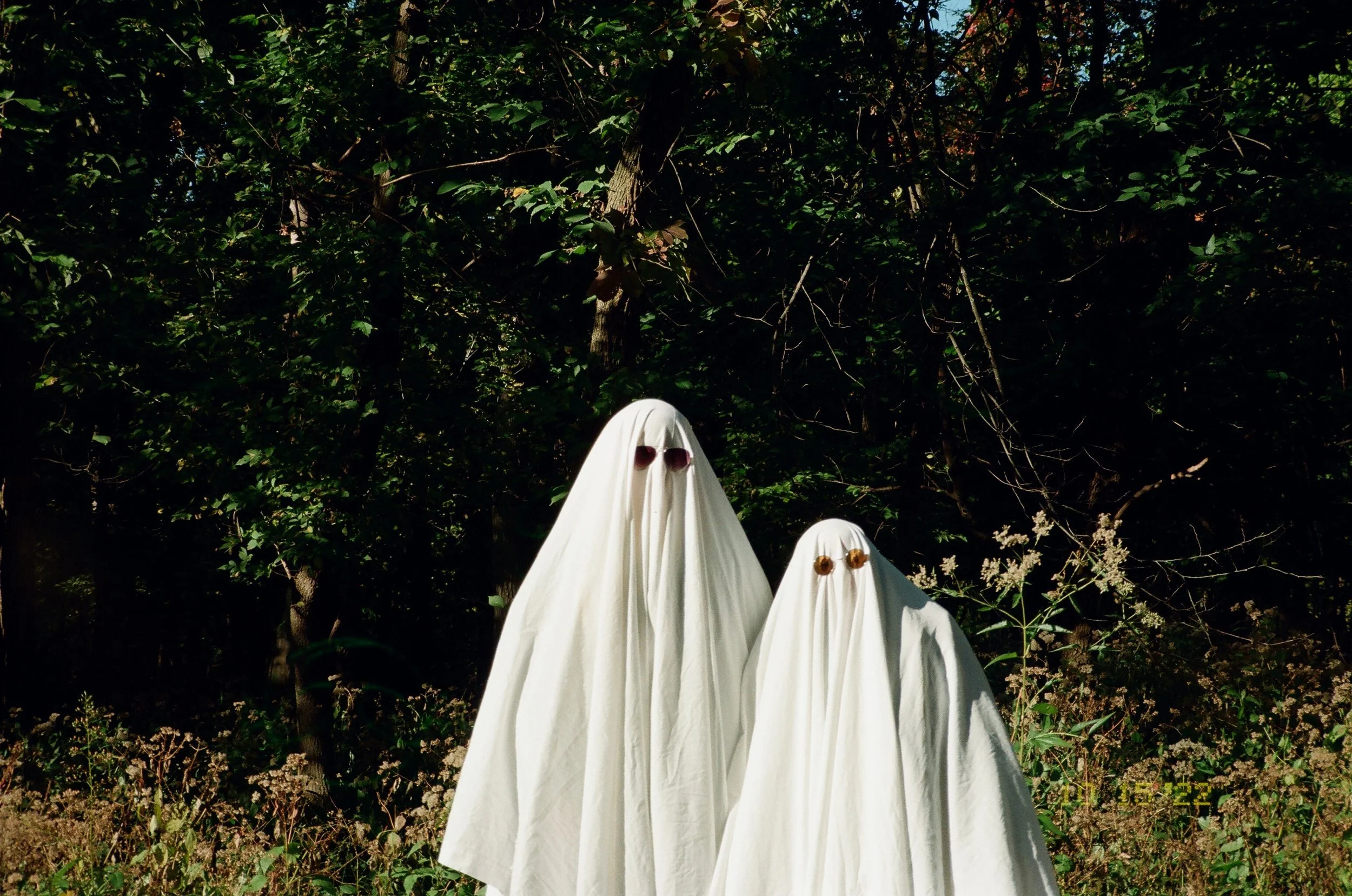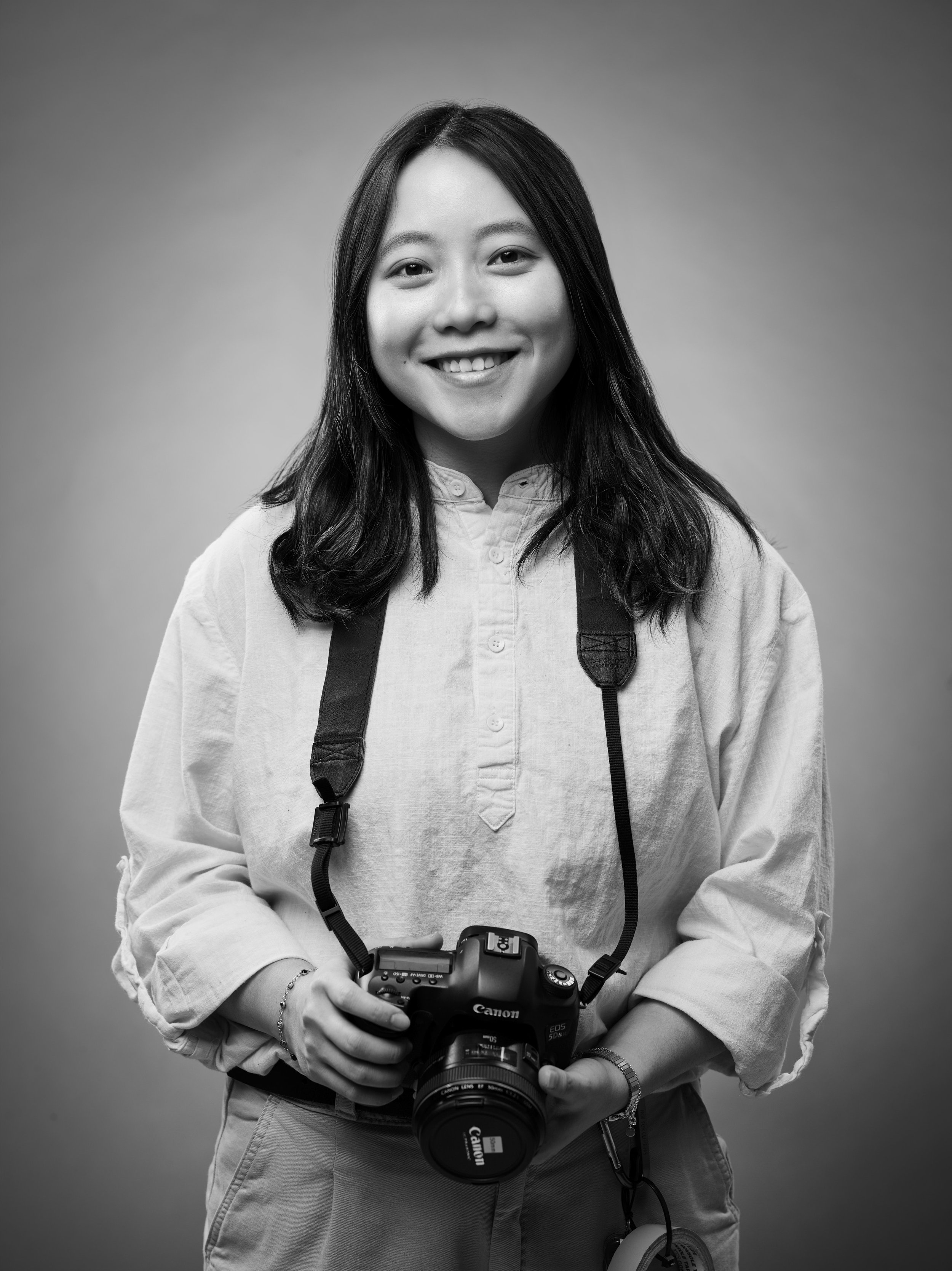10 Questions with Blake Huang
Blake’s sense of filmmaking as an artist bloomed as she discovered the emotions it can bring to people, and she wants to be a part of the magic that delivers a sensational and emotional impact. That’s why Blake moved from Taiwan to Chicago, the city that taught her movies and T.V. shows are more than just entertainment: they are topics to discuss and quote from, family rituals, shared experiences, trends, social commentary, and forms of escapism.
Her works blend a wide range of genres, including commercials, feature films, short films, and documentaries. It is her mission to bring out the experience of storytelling and achieve something wonderful for the audience to remember. She firmly believes movies are more than entertainment, but also the connections and memories across generations.
Blake Huang - Portrait
ARTIST STATEMENT
Blake works professionally in many roles in filmmaking. Video Editing to her is like playing a puzzle, assembling all the pieces of the story in the right place, sharing but also challenging the director’s perspective. Blake enjoys putting together the hard work of the crew to achieve our collective vision in storytelling. As for Sound Design, it’s amazing how much Blake can use sound to manipulate the audience and affect the storytelling. Not only to make the film more realistic but also to support the visual and the audience’s experience seamlessly. Blake also does Digital Imaging Technician (DIT) as a side gig on set; she enjoys the atmosphere at film productions, with everybody working hard to craft the storytelling together. Additionally, her photography works give her a break, inspire, and bring her different angles to look at the world. Blake is always looking forward to the opportunity to collaborate with people, solve new challenges, and create more movie magic.
Net, Film Photography, 81x54 cm, 2022 © Blake Huang
INTERVIEW
What initially sparked your passion for filmmaking, and how did your move from Taiwan to Chicago shape your artistic journey?
The famous director Robert Altman once said, "Filmmaking is a chance to live many lifetimes." My journey in the art world started as I discovered the emotions that film and TV can bring to people, and I want to be a part of the magic that delivers that sensational and emotional impact.
I moved to Chicago from Taiwan to study Film & Television Art. In doing so, I have gained opportunities and new horizons in the film industry. As the hometown of William Selig––the man who expanded film-making operations to the West Coast and invented Hollywood––Chicago showed me that movies and TV shows are more than just entertainment: they are topics to discuss and to quote from, family rituals, shared experiences, trends, social commentary, and forms of escapism. Throughout my years studying at Columbia College Chicago, I've built a strong foundation and community.
How did you develop into the artist and professional you are today? What key experiences helped you along the way?
I've always liked to tell stories through images. I started learning fine art when I was young, and that sparked the idea of visual storytelling, which has led me to filmmaking today. After I moved to Chicago, I experienced so many diverse forms of art: music, sculpture, films, architecture, etc. They resonate with each other and give the city its unique attitude. That's what inspired me to make my first award-winning short film, Hole Punched Ear.
Hole Punched Ear is more than a Chicago-based film; it also represents the perseverance of the artists here––never giving up on our beliefs. After making the short film, I've grown so much, both artistically and technically. The experience and connections helped me along the way, and it's a memory that still resonates with me today.
Ghost Friends, Film Photography, 81x54 cm, 2022 © Blake Huang
You work in various roles within filmmaking, from video editing to sound design. How do you balance these different aspects of production, and what excites you most about each one?
In most cases, video editing is the step before sound design; they are highly related, and one affects the other. Planning is the key: the more concepts I solidify during video editing, the more creative I can be in sound design. Video editing, to me, is like assembling a puzzle, putting together all the pieces of the story in the right place, and sharing but also challenging the director's perspective. I enjoy tailoring the hard work of the crew to achieve our collective vision in storytelling. As for sound design, it's amazing how much I can use sound to manipulate the audience and affect the storytelling. This is not only to make the film more realistic but also to support the visual and the audience's experience seamlessly.
When editing films, you described the process as "assembling a puzzle." Can you walk us through your editing process and how you work to maintain the director's vision while bringing your creative input?
For sure! The first thing I always do is familiarize myself with the script and the footage. Sometimes, the Editor won't be on board until post-production, so it's important to know what you're dealing with. Then, besides putting scenes together based on the script, the creative aspect is to see another way of telling the story, the connection between each shot, and the emotion you want to bring to the audience. Sometimes, you have to walk away from the project to have a new inspiration and vision. As an Editor, my job is not only to stitch the film together but to challenge the storytelling. Think of the director's vision as the final destination: it is the Editor's job to find the best route. We work together, trying out different methods, fixing problems along the way, and finding out where all the pieces of the film fit well together to finish the puzzle.
Frog+Spider (still), Short Film, 2024 © Blake Huang
Frog+Spider (still), Short Film, 2024 © Blake Huang
Sound design plays a significant role in your work. How do you use sound to enhance storytelling and manipulate the audience's emotional experience?
In many cases, the audience doesn't actually need to see everything. Hearing is one of the senses that we easily ignore, but has a great impact on our subconscious in building out a story's setting. For example, to build the environment in a crowded coffee shop, instead of hiring extras and showing them talking, you can simply focus on your main characters and use sound design to build out the environment, like adding walla (the background sound of people talking indistinctly) to manipulate the audience into feeling as if they themselves were in the crowded coffee shop.
We tend to pay attention to what we see much more often than what we hear. Due to this, sound design is the type of craft where the more invisible it is, the better. My work is to engage the audience into the story and bring them out from the theater, the living room TV, or even a cell phone screen into the new world that they're watching.
As a director, your work spans a wide range of genres, including commercials, feature films, and documentaries. How do you approach the storytelling process differently for each medium?
Well, I was never a director, but as an Editor, I use different editing styles and techniques. For commercials, I focus on the product and timing as there's usually a strict time constraint in TV commercials. For feature and short films, the narrative is at the center; thus, I have to make the edit as seemly as possible to keep the audience's attention in the storytelling. For documentaries, I'm trying to uncover the story, so I'm the viewer's guide to reveal this unknown world. As I'm at the beginning of my career, I believe there are hills to climb in each of these genres, so I'm always open to learning more from my fellow filmmakers.
Hole Punched Ear, Movie Poster, 2024 © Blake Huang
You've mentioned that movies are more than entertainment; they're shared experiences and social commentary. Can you elaborate on how these elements influence your storytelling approach?
I've always been fascinated by how movies and TV shows can make people laugh, cry, or even just feel. I want to create a reality for people when their most unreachable dream actually happens on screen: where they can have a beautiful romance story, a great adventure, become heroes and villains, and be whoever they want. That is the power of film, and that is how I want to be remembered: a filmmaker, a dream maker. I'd like my work to contain elements that require deeper thinking from the viewers, and with different points of view, people can interpret the underlying messages behind my films. And that is the style of storytelling that I often like to pursue.
Looking back at your career so far, what project are you most proud of, and what impact do you hope it had on the audience?
Throughout the years, I've worked on more than 20 productions. Among them, the sci-fi/action short film "Hole Punched Ear" gave me so much creative space and imagination to play with in post-production. I was DIT on set, editing and sound designing the film. It ended up getting selected for and winning many film festivals around the world. The film is not just action and Sci-Fi; it's about the meaning of art, and it fits so well into the artsy landscape of Chicago. The stereotype about artists is that they don't make money, but art is what we all live for: it fuels the human spirit. People often neglect the importance of spreading the beauty of art. My hope is that the audience walks away understanding the impact art can have on our bonds with others, and how art can paint a vibrant picture of the emotions we are struggling to express.
Hole Punched Ear (still), Short Film, 2024 © Blake Huang
Hole Punched Ear (still), Short Film, 2024 © Blake Huang
What upcoming projects or creative challenges are you most excited about? Are there any new directions you're eager to explore in your work?
As a full-time employee in a production studio, I'm not only the Video Editor but also get the chance to work on set. Thisallows me to become familiar with more aspects of filmmaking that are not only in post-production but also in production.I'm excited to use my knowledge and new experiences on set to improve my craft. With new technology and trends, I want to explore and challenge myself with new editing styles and better workflow. Not only to improve myself, but also to fit in the fast-changing world.
Lastly, where do you see yourself and your work five years from now?
I am proud of the reputation my work has brought me, and I wish to pursue more narrative-driven movies and TV shows. In five years, I hope that I have worked on at least one film that has reached wide audiences and left a significant impact on the viewers. My goal is not only to create films for the sake of artistic expression, but to craft narratives that resonate on a profound level, leaving an enduring impact on audiences and the creators.
Artist’s Talk
Al-Tiba9 Interviews is a promotional platform for artists to articulate their vision and engage them with our diverse readership through a published art dialogue. The artists are interviewed by Mohamed Benhadj, the founder & curator of Al-Tiba9, to highlight their artistic careers and introduce them to the international contemporary art scene across our vast network of museums, galleries, art professionals, art dealers, collectors, and art lovers across the globe.






















